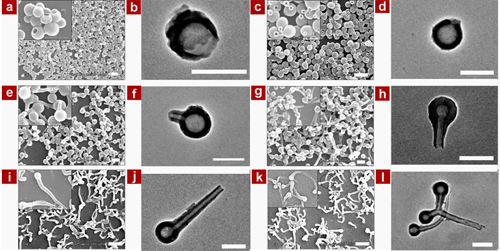Progress on Controllable Assembly, Aggregates Structures and Properties of Functional Materials
The researchers from CAS Key Laboratory of Organic Solids, Institute of Chemistry, Chinese Academy of Sciences, made a series of significant progress in the controllable assembly and properties of functional materials by the support of National Natural Science Foundation of China, the Ministry of Science and Technology of China, and the Chinese Academy of Sciences,
They developed a new strategy for producing supramolecular interactions on the active interface of inorganic/organic hybrid nanomaterials based on ZnO NRs and PDI, which resulted in the molecular pocket with new recognition functions. It can be used for selectively detecting, enriching and separating perylene in solutions by the supramolecular interactions leading to the modulation of both signals. This work demonstrated the capable usefulness of inorganic/organic hybrid nanomaterials in the detection of PAHs pollutants. Potentially, the same approach can be applied to other members of this inorganic/organic hybrid nanomaterials family to construct sensitive and selective sensors for other organic molecules, anions and ions. The results were published on Angew. Chem. Int. Ed. 2010, 49, 2705.
In addition, they achieved the controlling progressive growth of the porphyrin triad from zero to multi- dimension nanostructures. SEM and TEM images vividly recorded the growth process and confirmed that the molecules are able to self assemble into vesicles of 0D and continually grow into 1D and 2D nanostructures. These results provide further evidence that feature of the resulting nanostructures is able to be controlled. More exciting, this progressive growth demonstrates a promising pathway to construct the research model in nature. The results were published on Adv. Mater.2009, 21, 1721 and were highlighted by Synfacts 2009, 6, 0615. They controlled the molecular aggregation behaviors by the shuttling movement of the macrocycle. Exploitation of the molecular shuttle to control the molecular aggregation behaviors will provide greater understanding in the field of molecular shuttle applications (Adv. Funct. Mater. 2009, 19, 141). A series of new progress in the research of self-assembly, solid structures and properties were successfully achieved and published on J. Phys. Chem. C 2010, 114, 2925;J. Phys. Chem. Lett. 2010, 1, 327;Langmuir 2010, 26, 3179; ChemPhysChem, 2010, 11, 659 et al.
Angew. Chem. Int. Ed. 2010, 49, 2705.

The molecular pocket formed on the active interface of inorganic/organic materials

The controlling progressive growth from 0D nanocapsules to 2D nanotubes in nature





